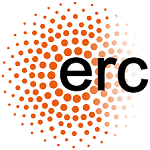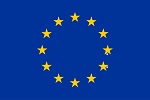SpectroPhotometric Imaging in Astronomy with Kinetic Inductance Detectors
Résumé du projet :
Detecting the light of faint galaxies with high-sensitivity kinetic inductance cameras
The SPIAKID project aims at designing, building and deploying on the sky a spectrophotometric imager based on Kinetic Inductance detectors. The pixels of these detectors are constituted by oscillating LC circuits manufactured with a supraconducting material. By detecting the change in its oscillation properties we detect the arrival of a photon and its energy by obtaining low resolution spectra of about 15 R, where R is denoted by the resolving power over a wide spectral range (goal : 0.45 μm to 1.60 μm). Diffraction-limited images can be obtained with image reconstruction techniques, thanks to the fast response of the KIDs. To drive the design we chose to derive ages and metallicities for stars in Ultra Faint Dwarf galaxies in the Local Group. These are the key to understand early galaxy formation processes and this requires knowledge of their precise stellar ages and metallicities.
Objective
The SPIAKID project will build a camera using Kinetic Inductance Detectors (KIDs) to equip an 8 m class telescope to derive ages and metallicities for stars in Ultra Faint Dwarf galaxies (UFDs) in the Local Group. UFDs are the key to understand early galaxy formation processes, including the properties of the first stars, and the role of environment and internal feedback in shaping the evolution of dwarf galaxies. A full exploitation of UFDs to understand these processes requires knowledge of their precise stellar ages and metallicities. This is difficult, in many cases impossible, to obtain with existing instruments because of the faintness of UFDs. SPIAKID will allow unprecedented efficiency in acquiring wide-band spectrophotometry, making this possible. The KID provides a low resolution spectrum (goal : λ/Δλ 15) over a wide spectral range (goal : 0.45 μm to 1.60 μm), a single exposure instead of many single-band exposures. The instrument throughput is increased as the design is simplified since filtering is unnecessary and the visible and infra-red optical paths are combined. The KIDs are read continuously with zero read-out noise so the integration is driven in real time by monitoring the signal-to-noise ratio. Finally, their response is faster ( 30 μs) than the coherence time of atmospheric turbulence (a few ms) so diffraction-limited resolution is achieved with existing image reconstruction techniques. The reconstructed images will be sharper and deeper than can be achieved by traditional seeing-limited imagers. The SPIAKID instrument will tackle other science cases, e.g. transiting exoplanets and their atmospheres or the electromagnetic emission from gravitational wave sources, and the instrument will be offered to the community to foster other uses. Our technological developments for the KIDs will place European scientists in a position to design and build innovative instruments, in astronomy but also, for example, in fast imaging for fluorescence microscopy.
Date de début : 01/01/2020
Date de fin : 31/12/2024
Budget Observatoire de Paris : 177 853,19 €
Budget total projet : 3 109 215 €
This project has received funding from the European Union’s Horizon 2020 research and innovation programme under Grant Agreement no 835087
Liens :


